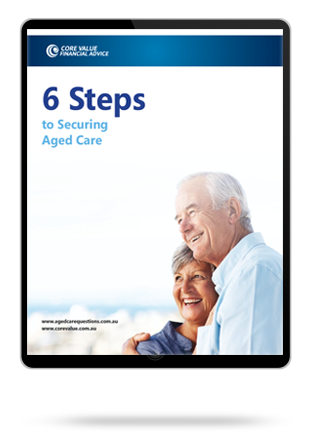Understanding how the Refundable Accommodation Deposit asset test is applied not only helps you calculate how much you should pay towards the RAD, but also allows you to implement aged care financial planning strategies to minimise aged care fees and maximise Age Pension payments.
Let’s put that mobility scooter of yours into overdrive and find out how!
In This Article
Refundable Accommodation Deposit Assets Test Explained
The Refundable Accommodation Deposit (RAD) assets test is applied in a particular way for Centrelink Age Pension purposes and another for Aged Care Means Tested Care fee purposes.
- Age Pension: When calculating your Age Pension entitlements, Centrelink applies an assets test and an income test, separately. They then apply whichever test results in the lowest Age Pension payments.
- Means Tested Care Fee: When calculating your Means Tested Care fee obligations, your fee is determined via a blend of your income-tested amount and assets-tested amount.
But where does a Refundable Accommodation Deposit come into play? How is a RAD treated under each of these asset tests?
Is a RAD an Asset for Centrelink Age Pension Purposes?
When it comes to the assets test for Centrelink Age Pension purposes, a RAD is not treated as an asset. It is completely exempt from assessment.
Therefore, your RAD value should not be taken into account when calculating your Age Pension payments.
Is a RAD an Asset for Means Tested Care Fee Purposes?
For aged care calculation purposes, a RAD is included in the Means Tested Care fee calculation. However, it will only count towards the assets-tested amount and not the income-tested amount, as a RAD does not produce an income.
To calculate the Means Tested Care fee, you need to figure out how much of your Means Tested Amount (MTA) exceeds the Maximum Accommodation Supplement Amount (MASA). The MASA is $66.94 per day as at September 2023.
Specifically, your MTA, which includes all assessable assets, is calculated as:
- 17.5% of assets in excess of $58,500 up to $197,735.20 (indexed); plus
- 1% of assets in excess of $197,735.20 up to $476,205.60 (indexed); plus
- 2% of assets in excess of $476,205.60.
Then divide this figure by the number of days in the financial year.
The result of this calculation equals your Means Tested Amount (MTA).
Your Means Tested Care fee is the amount that your MTA exceeds your MASA.
For example, if you had $500,000 of assessable assets. Your calculation would be:
MTA = (($197,735.20 – $58,500) x 17.5%) + (($476,205.60 – $197,735.20) x 1%) + (($500,000.00 – $476,205.60) x 2%) / 365 = $75.69 per day
Therefore, your Means Tested Care fee = $75.69 (MTA) – $66.94 (MASA) = $8.75 per day.
This assumes that you do not have an assessable income in excess of the Income Free Area of $32,331 per year. Otherwise there would also be an income component to the Means Tested Care fee calculation.
The actual Means Tested Care fee that you will be required to pay is officially determined once you complete and submit the Residential Aged Care Calculation of your cost of care form (SA457) to Centrelink.
Related Article: Is the Family Home Counted as an Asset for Aged Care?
Tips on Managing the RAD Asset Test Assessment
Listed below are a few tips and things to consider in regards to the assets test assessments when contributing to the RAD:
- Leave Cash Buffer – The more you contribute to the RAD, the less that is assessed for Age Pension purposes, but you still need to ensure you have access to sufficient funds to meet expenses for the remainder of your life.
- DAP from RAD – It is possible to have the DAP deducted from the RAD, meaning the DAP doesn’t need to be paid from your personal bank account – allowing you to contribute a higher initial amount to the RAD.
- Be Mindful of Loans – If you use funds from a family member, friend or bank loan to make a payment towards the RAD, you are increasing the amount assessed for Means Tested Care fee purposes. This needs to be weighed up against not borrowing funds and paying a higher DAP instead.
In addition to the above, there are other things to consider such as income-tested amounts for both the Age Pension and Means Tested Care fee, plus other aged care fees and the affordability of the chosen aged care facility.
There are several aged care financial planning strategies that make aged care more affordable simply by comparing various options.
At Core Value Aged Care Advice, we will help you navigate the complexities of aged care and find the best aged care financial advice for your family. If you have any questions or concerns regarding your situation, please call us on 1300 944 011 to speak with an expert aged care adviser today.
You might also like:

Hi, I hope you found this article useful.
If you wish to discuss your situation and what strategies may be of benefit please contact us here
Thanks - Shane


